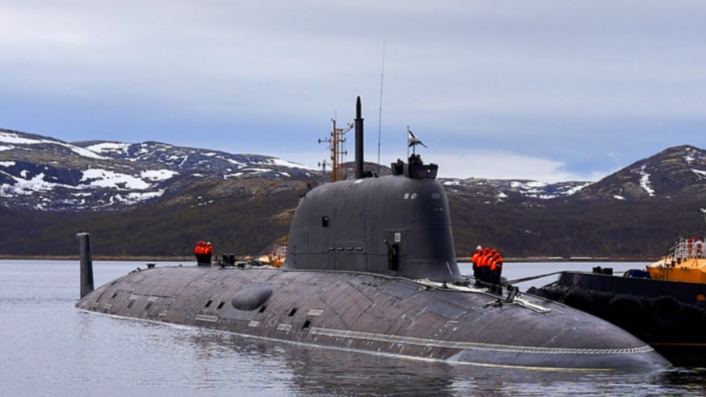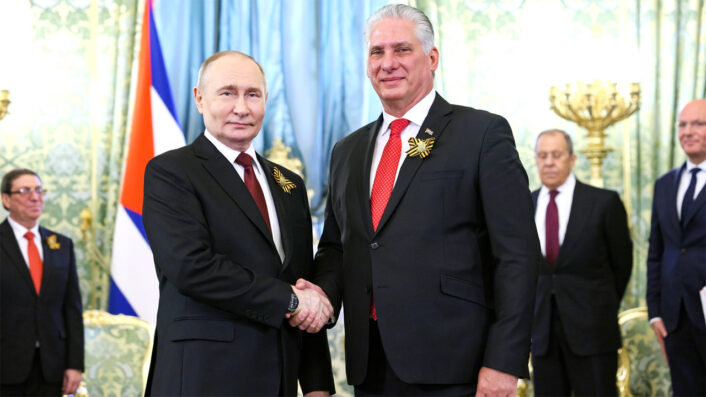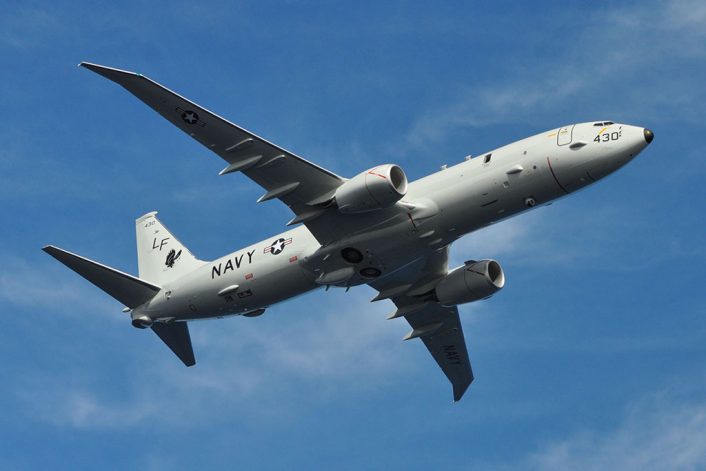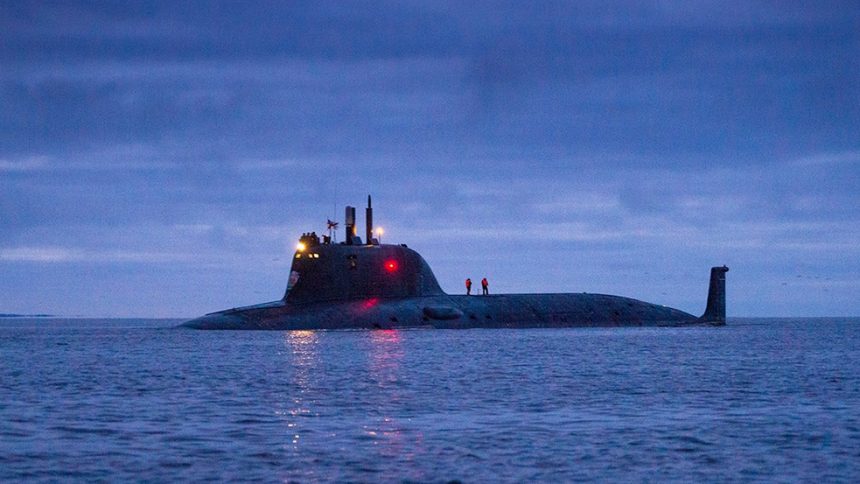The Yasen-M class Kazan’s “most notable” feature is the capability to launch a range of anti-ship and land attack missiles.
Heralding days of the tense Cold War, particularly the Cuban Missile Crisis, a Russian nuclear-powered submarine of the Yasen-M class, the Kazan, will visit Havana, Cuba has announced. This comes amid a particular inflection point in the war in Ukraine, where the imminent arrival of large capital weapons like the F-16s and the approval by US and Europe for Kyiv to strike targets inside mainland Russia.
Even more recently, French President Emmanuel Macron, announced the approval to send Mirage 2000-5 fighters to Ukraine, after months of holding off on Ukraine’s request for more aircraft. While the submarine itself would not be armed with nuclear weapons, the strategic message Moscow appears to be sending is loaded. Primarily, it flows from Vladimir Putin’s persistent wielding of the nuclear threat, where he promises the use of atomic weapons if the Russian Federation faces an “existential” threat.
Kazan and three other Russian naval vessels – missile frigate Admiral Gorshkov, fleet replenishment tanker Pashin and a salvage tug Nikolai Chiker – will dock in the Cuban capital from June 12 to 17, Cuba’s Ministry of Foreign Affairs said in two statements on Jun. 6, 2024. “None of the vessels is carrying nuclear weapons, so their stopover in our country does not represent a threat to the region,” it added.

The Yasen-class are a series of nuclear-powered cruise missile submarines designed by the Malakhit Engineering Bureau and built at the Sevmash Shipyard (JSC PO/Joint Stock Company Sevmash), part of the USC (United Shipbuilding Corporation). It is the country’s only nuclear submarine producer.
Shift in Russian Naval Thinking
The sub is based on the Akula-class, which were designed to replace the Russian navy’s Soviet-era nuclear attack submarines. While the Akula is optimized for a ‘hunter-killer’ role, the Yasen-class concept is more of a ‘nuclear guided missile submarine (or SSGN).
According to RUSI (Royal United Services Institute), the Kazan was constructed in eight years, less than half the time taken to construct the lead ship of the class, the Severodvinsk.
The Kazan’s and Severodvinsk’s “most notable feature” is the capability to launch a range of anti-ship and land attack missiles, including, in the future, the hypersonic 3M22 Zircon (successful tests were carried out, according to Russian State-run media outlets, in 2021). “The “shift” from SSNs like the Akula, primarily optimized for a hunter-killer role, towards a concept closer to SSGNs, “is likely indicative of a shift in the way that Russian submarines will contribute to future campaigns.”
Long-range strike missions appear to be superseding SLOC (Sea Lines of Communication) as a primary task. This forces “a change” in NATO’s ASW (Anti-Submarine Warfare) strategy in the High North, which primarily relied on the “barrier defence at the GIUK (Greenland–Iceland–UK) gap.” With the Yasens, Russian submarines “have little need to traverse this barrier in order to achieve their operational ends.”
Russia has already demonstrated this thinking its long-range missile fires into Ukraine that it started the war with in February 2022 and continues to this day. Despite the air denial imposed by Kyiv with its air force and Western AD (Air Defense) systems, Russia sends long-range Kh-101 ALCMs (Air Launched Cruise Missiles), P-800 Oniks, Kalibr sea-fired cruise missile, Iskander and Iskander-M tactical ballistic missile and Kinzhal aeroballistic hypersonic missile into Ukrainian cities and battlefield targets.
Weapons Loadout
Interestingly, the Kazan is equipped with the UKSK (3P-14B) vertical launch system consisting of 8SM-346 modules, having a length of 10-meters and a diameter of two-meters. They can hold either five 3M54-1 Kalibr missiles or four P-800 Oniks anti-ship missiles each.
The system will also be able to launch the 4500-km Kalibr-M missile which as of 2021 was under development, and a submarine launched variant of the Kh-101. This missile is presently fired by the Tupolev Tu-95 and Tu-160 strategic bombers, with variants capable of releasing decoys and dual-warheads already in use in Ukraine. These missiles provide the Yasen and Yasen-M with significant long-range land attack and anti-ship capabilities.
The Zircon meanwhile has a reported speed of Mach 6-8. “Depending on its flight trajectory, (it can potentially overwhelm) shipboard air defenses by denying them the time they need to develop a firing solution,” RUSI added.
Intent and Message
For one, the intent seems to be conveying a strategic message to the U.S. that if it can surround Russia with military bases and strategic alliances, Moscow too has the right to enhance strategic relations with countries around North America. However, this is being done at a very benign, calibrated level, where the Russian submarine is visiting Cuba without nuclear weapons, with no naval drills in seas shared by Havana and Washington.
For one, the activities are more cultural in nature. The Cuban statement sheds light on this: “Visits of naval groups from other countries are a historical practice that the Revolutionary Government has followed with nations with which we maintain friendly and cooperative relations. Russian sailors will fulfill a program of activities that will include a courtesy call on the Cuban Revolutionary Navy Commander and the Governor of Havana. Besides, they will go on a tour around places of historical and cultural interest.”

Secondly, the announcement was made by the Cuban side and not Russia. It means Moscow does not intend to attack the US mainland and is not actively publicizing its move.
Three, there were tell-tale signs in previous Russian and Cuban military engagements. On Jun. 27, 2023, the RuMoD (Russian Ministry of Defense). Cuban defense minister General Alvaro Lopez met his counterpart at the time, Sergei Shoigu.
A RuMoD release on its Telegram channel quoted Shoigu naming the agenda. These were a “wide range of issues in the military and military-technical field,” thanking Havana’s support for Russia’s war in Ukraine, criticizing the West’s “so-called rules based-order,” and opposing the “illegal trade and economic embargo against Cuba.”
On May 9, Putin also met the Cuban President Miguel Diaz-Canel Bermudez on the sidelines of the Supreme Eurasian Economic Council Union. The readout by the Kremlin quoted Putin sharing solidarity between two against “illegal sanctions and restrictions…by the United States.”
Lastly and most stunningly, the move appears to be aiding China’s own position in its tensions with the US. On Jun. 6, Chinese Foreign Minister Wang Yi met the Special Envoy of the Cuban President and its Foreign Minister Bruno Rodriguez Parrilla in Beijing. Wang said “China resolutely opposes the US’s blockade against Cuba,” and “firmly supports (it in) opposing foreign interference.”
The timing of the Chinese-Cuban engagement, coming on the same date as Cuba announced the Russian submarine’s visit, amid the overall geopolitical situation, makes a very compelling political statement.
Intelligence gathering mission
A Russian nuclear submarine approaching the region will probably attract the attention of several ISR (Intelligence Surveillance Reconnaissance) assets. Among the others, we can expect U.S. Navy P-8A Poseidon being dispatched to shadow the Kazan submarine.

As explained in a previous post: “The [P-8 Poseidons] are much more than MPA (Maritime Patrol Aircraft): they are multi-mission platforms that can gather valuable intelligence using a wide array of sensors. Among these, an Advanced Airborne Sensor (a dual-sided AESA radar that can offer 360-degree scanning on targets on land or coastal areas, and which has potential applications as a jamming or even cyberwarfare platform according to Northrop Grumman); an APY-10 multi-mode synthetic aperture radar; an MX-20 electro-optical/infrared turret for shorter-range search; and an ALQ-240 Electronic Support Measure (ESM) suite, able to geo-locate and track enemy radar emitters. Moreover, all sensors contribute to a single fused tactical situation display, which is then shared over both military standard and internet protocol data links, allowing for seamless delivery of information amongst U.S. and coalition forces.”
U.S. Navy P-8As can regularly be tracked online; there are chances we will be able to track the “hunt for Kazan” on flight tracking websites and apps.








